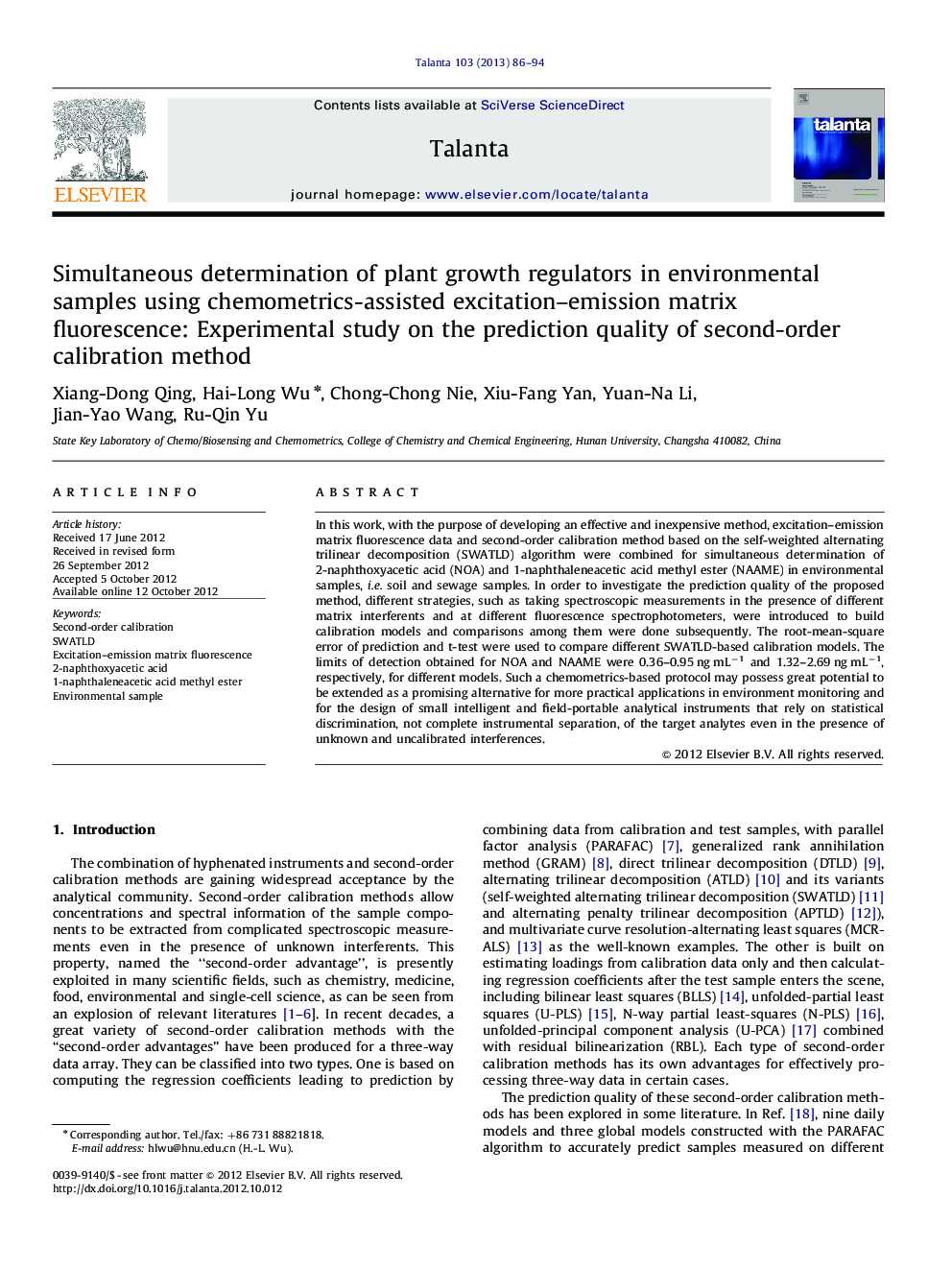| Article ID | Journal | Published Year | Pages | File Type |
|---|---|---|---|---|
| 1242904 | Talanta | 2013 | 9 Pages |
In this work, with the purpose of developing an effective and inexpensive method, excitation–emission matrix fluorescence data and second-order calibration method based on the self-weighted alternating trilinear decomposition (SWATLD) algorithm were combined for simultaneous determination of 2-naphthoxyacetic acid (NOA) and 1-naphthaleneacetic acid methyl ester (NAAME) in environmental samples, i.e. soil and sewage samples. In order to investigate the prediction quality of the proposed method, different strategies, such as taking spectroscopic measurements in the presence of different matrix interferents and at different fluorescence spectrophotometers, were introduced to build calibration models and comparisons among them were done subsequently. The root-mean-square error of prediction and t-test were used to compare different SWATLD-based calibration models. The limits of detection obtained for NOA and NAAME were 0.36–0.95 ng mL−1 and 1.32–2.69 ng mL−1, respectively, for different models. Such a chemometrics-based protocol may possess great potential to be extended as a promising alternative for more practical applications in environment monitoring and for the design of small intelligent and field-portable analytical instruments that rely on statistical discrimination, not complete instrumental separation, of the target analytes even in the presence of unknown and uncalibrated interferences.
► NOA and NAAME are important plant growth regulators by synthesis. ► Chemometrics-assisted EEMF can quantify them in complicated environmental samples. ► We took spectroscopic measurements at different experimental conditions. ► Different calibration models were built and compared subsequently. ► The LODs for NOA and NAAME were 0.36–0.95 ng mL−1 and 1.32–2.69 ng mL−1, respectively.
